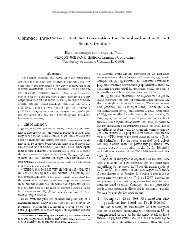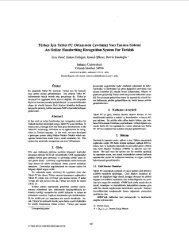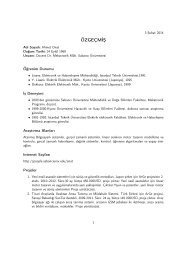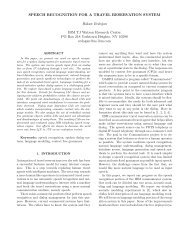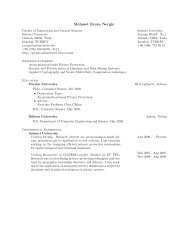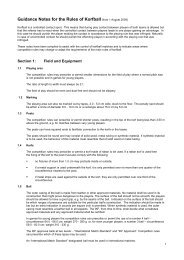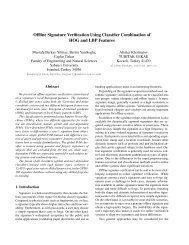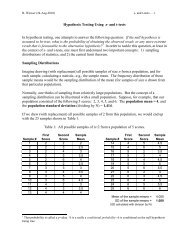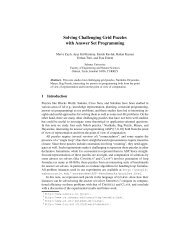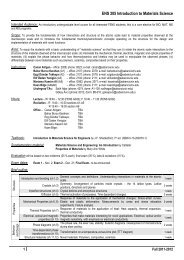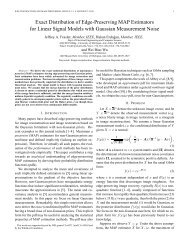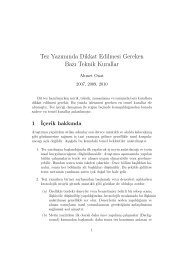PROBLEMS OF U.S. MILITARY BASES IN OKINAWA
PROBLEMS OF U.S. MILITARY BASES IN OKINAWA
PROBLEMS OF U.S. MILITARY BASES IN OKINAWA
You also want an ePaper? Increase the reach of your titles
YUMPU automatically turns print PDFs into web optimized ePapers that Google loves.
only place outside the United States that hosts the<br />
Marine Corps on a division scale. A total of 17,000<br />
Marines are stationed there. In the 1990s, the U.S.<br />
organized Marine Expeditionary Units with greater<br />
mobility. Of seven such units around the world, the<br />
31st Marine Expeditionary Unit in Okinawa is the only<br />
unit deployed on the ground.<br />
The fundamental duty of these troops is to do<br />
operations widely in the Asia-Pacific region. In 1982,<br />
Secretary of State Caspar Weinberger stated: “The<br />
Marines in Okinawa are not assigned to the defense<br />
of Japan.” He also said that the U.S. operation areas<br />
were the Western Pacific and Indian Ocean. This<br />
statement astonished the Japanese people. As Admiral<br />
Joseph W. Preuher, who at the time was the<br />
Commander of the U.S. Pacific Command said in<br />
the U.S. Senate Services Committee in March 1996,<br />
the Marine Corps and other U.S. forces “are ideally<br />
positioned to respond to contingencies in the Western<br />
Pacific,” indicating that Okinawa is essential for<br />
U.S. strategy in the Western Pacific. The 7th Fleet<br />
goes into action with the Marine Corps stationed in<br />
Okinawa. (Yokosuka is used as the home port of a<br />
U.S. aircraft carrier. It is the only port outside the<br />
United States that hosts a U.S. aircraft carrier.) Even<br />
in the home page of the 7th Fleet, there is a clear<br />
mention that the mission coverage extends a wide<br />
range from the whole region of the west Pacific<br />
through the Indian Ocean to<br />
the East Coast of Africa.<br />
Okinawa had been the<br />
largest nuclear base in Asia<br />
until the reversion of <br />
Okinawa to Japan in 1972.<br />
The U.S. had a free hand to<br />
carry out sorties in the Vietnam<br />
War and so on. At the<br />
time of reversion, the governments<br />
of Japan and the U.S.<br />
concluded secret agreements<br />
to allow the U.S. to bring<br />
nuclear weapons into<br />
Okinawa and make attacks<br />
from the bases freely in an<br />
emergency. Thus, Okinawa<br />
has been consistently made<br />
a strategic stronghold for the<br />
U.S. to make sorties abroad,<br />
and the presence of such<br />
troops has been a cause of a<br />
plight of the prefecture’s<br />
people.<br />
(1) Damage from U.S. Bases Located in<br />
Densely Populated Areas<br />
Terrifying accidents involving U.S. Forces<br />
That large U.S. bases are being located in areas<br />
crowded with houses, schools and hospitals has caused<br />
damage peculiar to Okinawa.<br />
First, the fear of possible accidents always haunts<br />
residents around the bases. Last April, a helicopter from<br />
the Futenma base crashed on the coast in an area where<br />
an electric power plant was located. Last June, a Harrier<br />
attacker from Kadena base failed to take off and<br />
went up in flames. In Okinawa, such accidents are almost<br />
daily happenings. It is a matter of course that accidents<br />
involving armed forces take place in any country. In<br />
case of Okinawa, as there are schools and houses only<br />
several hundred meters away from runways, a false<br />
step can lead to a big disaster.<br />
Let’s take up an accident caused by parachuting<br />
exercises conducted at Yomitan and Iejima Island. In<br />
1965, when a parachuting exercise was underway at<br />
the Yomitan airfield, a trailer falling from a transport<br />
plane was about to hit a nearby house directly. Becoming<br />
aware of the danger, a fifth-grade primary school girl<br />
warned her family of the danger and rushed out of the<br />
house. Hitting an electric light pole, the trailer turned<br />
U.S. 7th Fleet's Operation Area<br />
operation area<br />
source: http://www.c7f.navy.mil<br />
5



